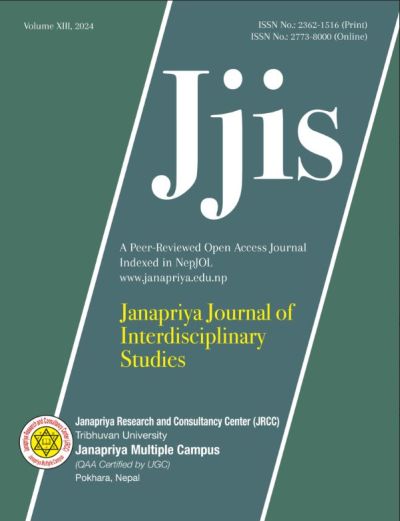Application of GIS in Analyzing Public Open Spaces and Their Adaptive Capacity for Risk Mitigation During and After Disaster Phases in Pokhara Metropolitan City, Nepal
DOI:
https://doi.org/10.3126/jjis.v13i1.75524Keywords:
Adaptive capacity, disaster, mitigation, per capita, public open space, riskAbstract
Public open spaces (POS) play a crucial role in urban environments, providing recreational benefi ts and serving as critical infrastructure for disaster risk reduction (DRR). This study focuses on the importance and adaptive capacity of POS in Pokhara Metropolitan City (PMC), a region prone to natural hazards like earthquakes, landslides, and flooding. Utilizing GIS technology, the study identifies and analyzes POS that can be optimally located and sufficiently equipped for effective disaster response. The research combines exploratory, descriptive, and analytical approaches, incorporating both qualitative and quantitative data from primary and secondary sources. A field survey identified 272 patches of POS, of which 162 were deemed suitable for disaster rehabilitation based on safety and accessibility criteria. The study reveals that PMC’s POS per capita is significantly below the World Health Organization’s recommended standard of 9 m², with only 3.3 m² available per person. The spatial distribution and size of POS vary across the city’s 33 wards, highlighting the need for strategic planning and increased investment in POS to enhance urban resilience. The findings underscore the necessity for stakeholders to manage and expand POS to protect life and property effectively during and after disasters, emphasizing the importance of integrating POS management into urban planning and disaster preparedness strategies.
Downloads
Downloads
Published
How to Cite
Issue
Section
License
Copyright (c) 2024 The Author(s)

This work is licensed under a Creative Commons Attribution-NonCommercial 4.0 International License.




